I hate driving. With all my heart and soul, I hate to get behind the wheel and press my foot on the gas. But that didn’t stop me from renting a car on the last day of July and driving two hours north of Toronto to the Carden Alvar Provincial Park. I wanted to see types of butterflies I can’t find in Toronto, and this desire was so strong—for something new! for rich colors!—that it overcame my reluctance to drive. Since the park boasts an ecology that’s rare almost to the point of uniqueness, I knew my chances of finding something different were excellent.
A little background on that ecology. The Swedish word alvar refers to a geological formation that consists of barren limestone bedrock covered in places with soils so thin they can only support grasses and the toughest of shrubs. A forested alvar is a contradiction in terms. Alvars are restricted to North America (principally Ontario) and northern Europe. If you’ve ever visited the weird lunar landscape of the Burren in Ireland’s County Clare, you know what an alvar looks like at its most extreme.
Here’s a photo of the Carden Alvar in late spring when the Prairie Smoke was in blossom. The rich succession of wildflowers that bloom from April to October is one reason the park supports such an impressive number and variety of butterflies.
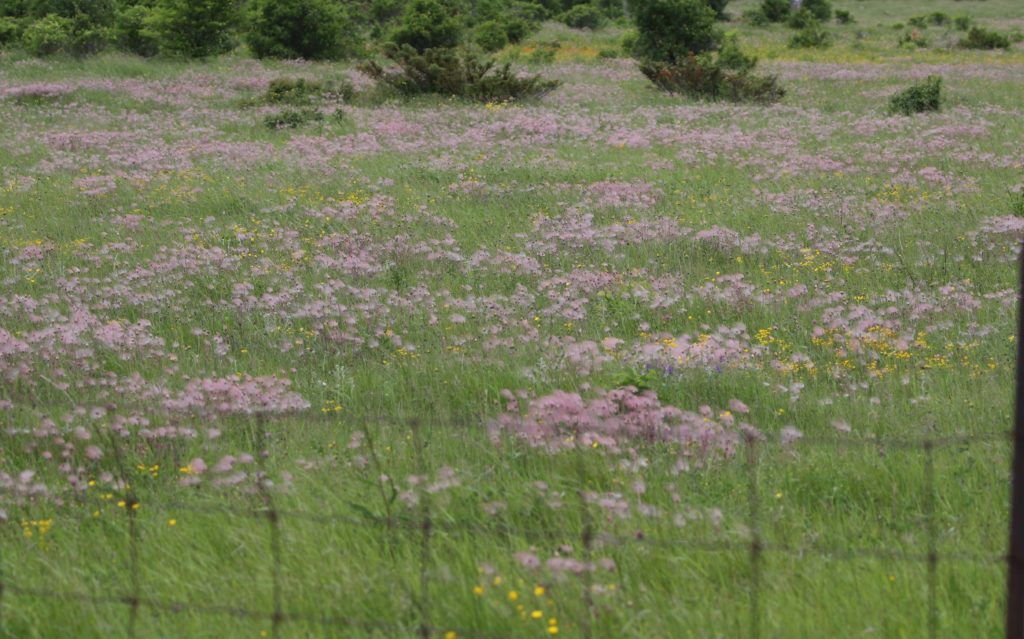
Fritillaries
Fritillaries are big, showy brushfoot butterflies that are usually a rich shade of orange on top and often have distinctive silver spots on the underside of their wings. There are six or seven species that you can expect to see in southern Ontario. In Toronto, the only species I see on a semi-regular basis is the Great Spangled Fritillary, but even they seem to be getting rarer every year.
Within ten minutes of arriving at Wylie Road, the dirt track that forms the park’s western border, I began to see Aphrodite Fritillaries, a new butterfly for me, in groups of two or three along the side of the road. They were busy nectaring on the pink flowers of Wild Bergamot or on purple Joe Pye Weed. Here’s a photo of an Aphrodite Fritillary that shows the beautiful orange coloring on the upperside of the wings.
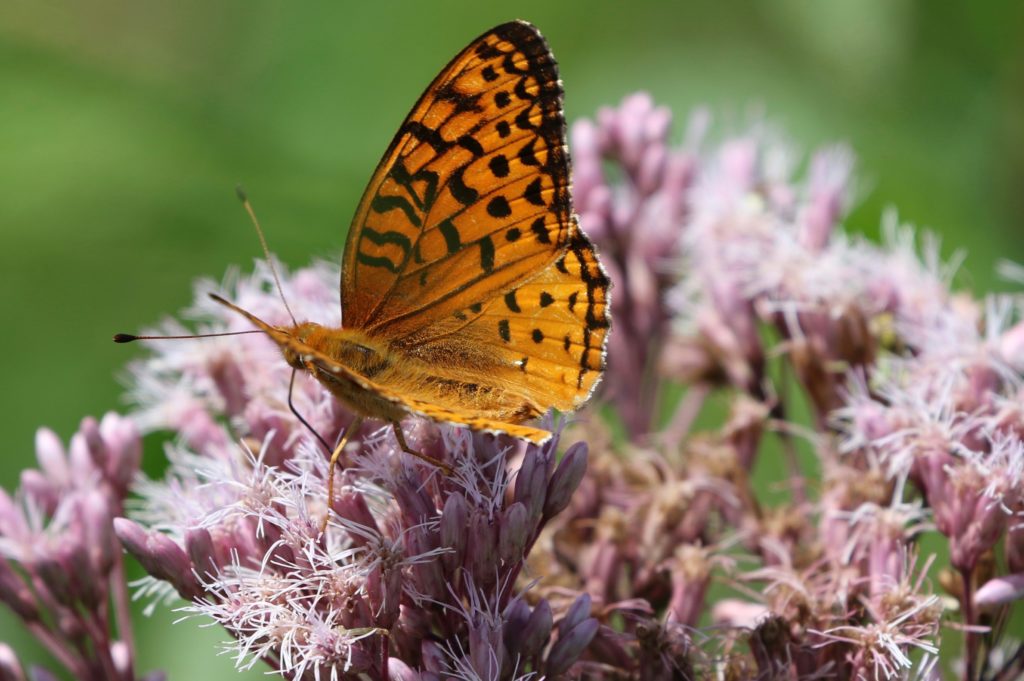
Here’s another photo that shows the silver spotting on the underside of the Aphrodite’s wings. In both photos, the butterfly is feeding on Joe Pye Weed.

Pretty soon, I also started seeing good numbers of the Great Spangled Fritillary, a close relative of the Aphrodite. Here is a photo of the Great Spangled’s upperside.
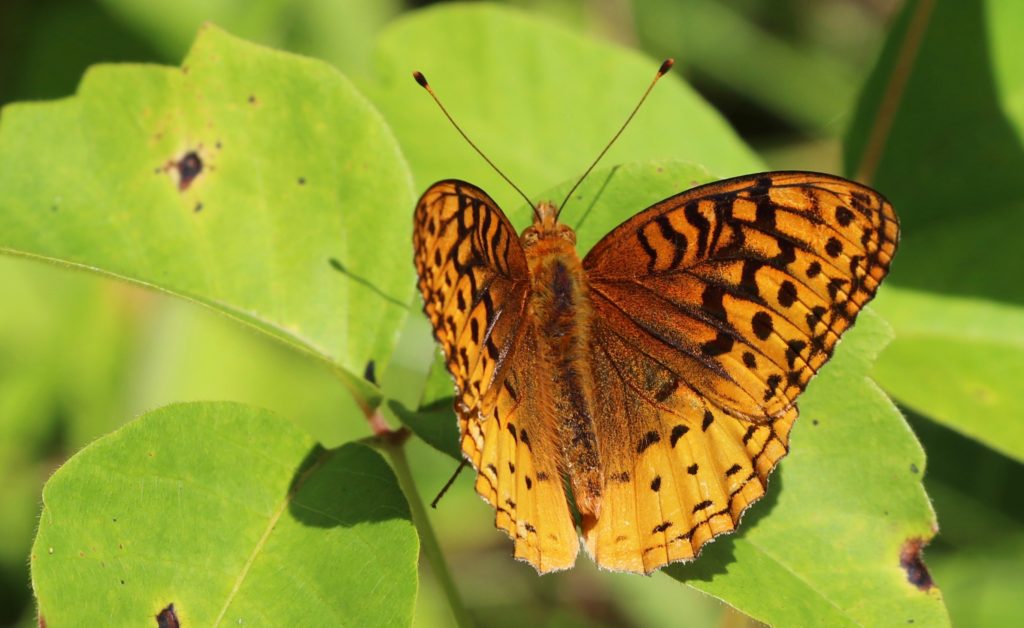
And here is one of the underside, with its silver spotting.
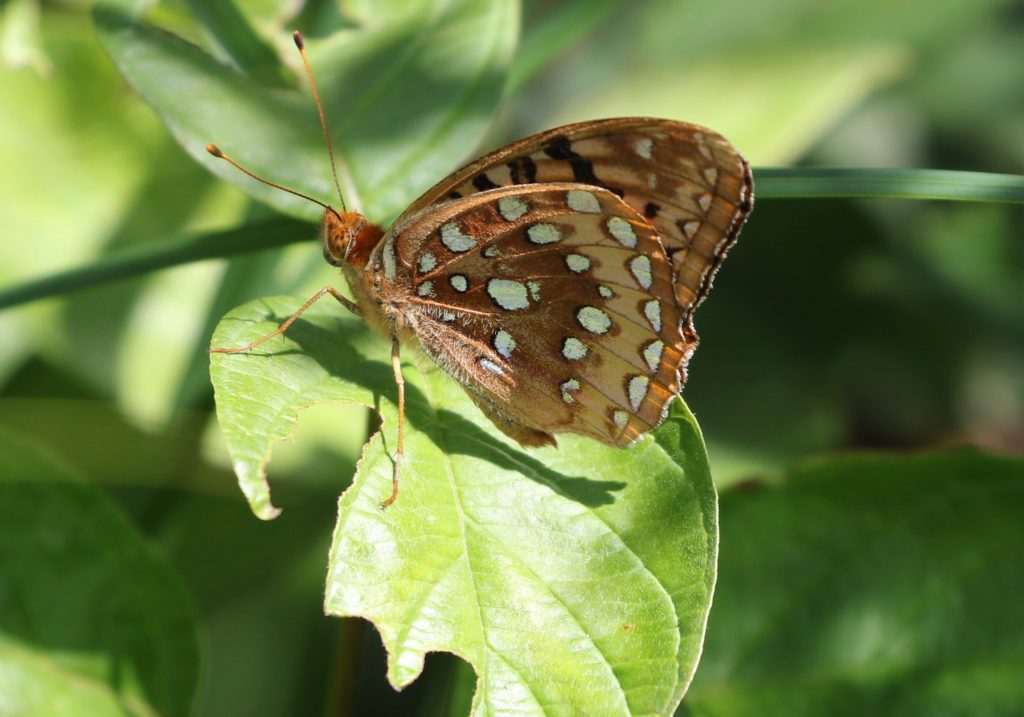
These two species—the Aphrodite and Great Spangled Fritillary—are so similar in appearance that you may wonder how we tell them apart. The truth is, there are certain clues, which naturalists call field marks, that make it relatively easy to identify these two different species.
Here’s another photo of the Aphrodite’s upperside. The arrow points to a small black dot on the butterfly’s forewing. This dot is always present on the Aphrodite, but it’s absent on the Great Spangled. You can see this for yourself, if you re-examine the photos above.
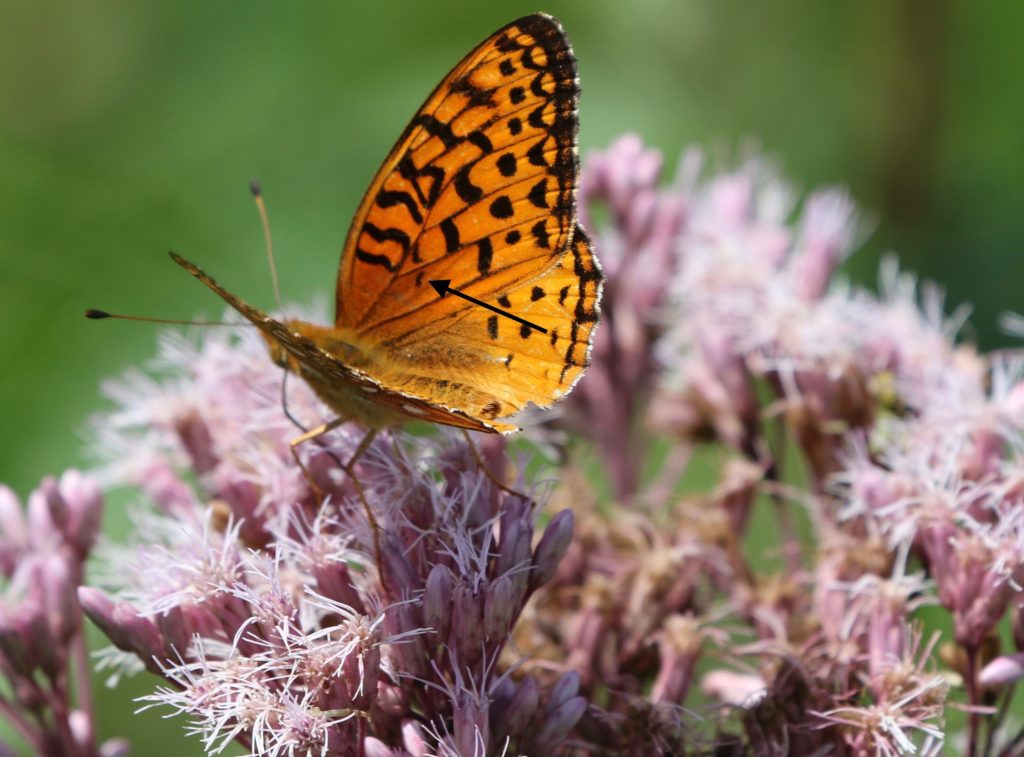
There are also important field marks on the underside of the wings. Here is another photo of a Great Spangled’s underside. The arrow points to what lepidopterists call a submarginal band on the butterfly’s hindwing. Compare this with the submarginal band on the Aphrodite shown above. Note that while the band is quite wide on the Great Spangled, it’s really rather narrow on the Aphrodite. This is another way we have of telling these two beautiful but remarkably similar butterflies apart.
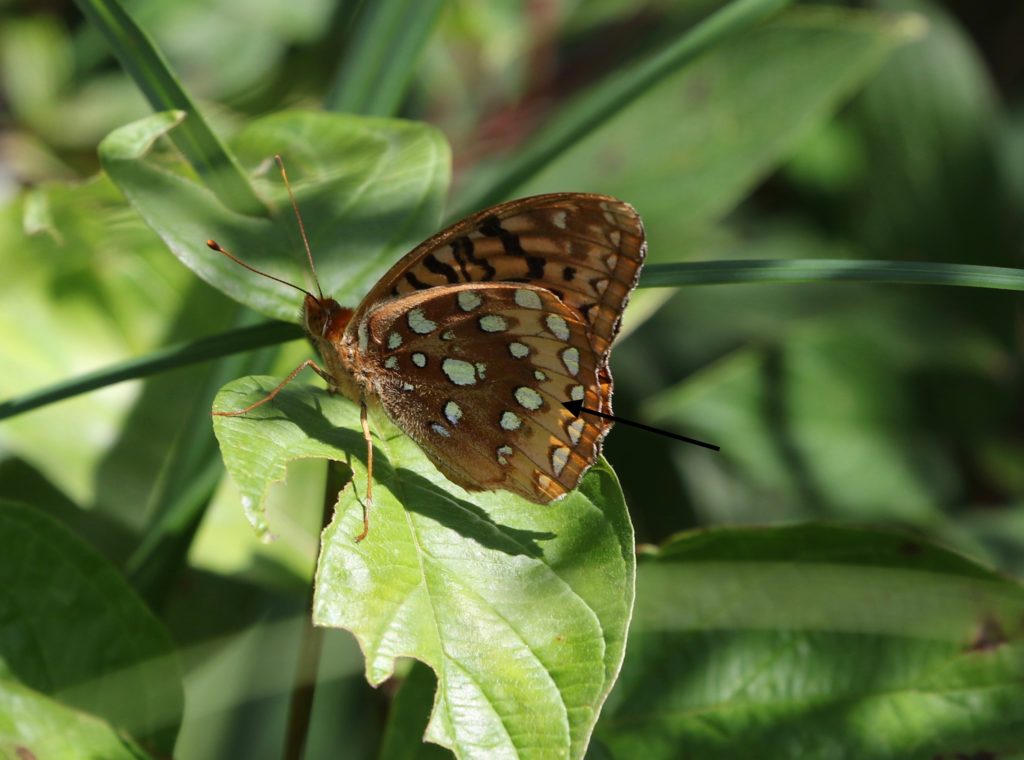
On this trip, I saw two other species of fritillaries but was unable to get photos of either. The Silver-spotted and the Meadow Fritillary will be at the top of my list the next time I visit the Carden Alvar. It’s always good to have a reason to return.
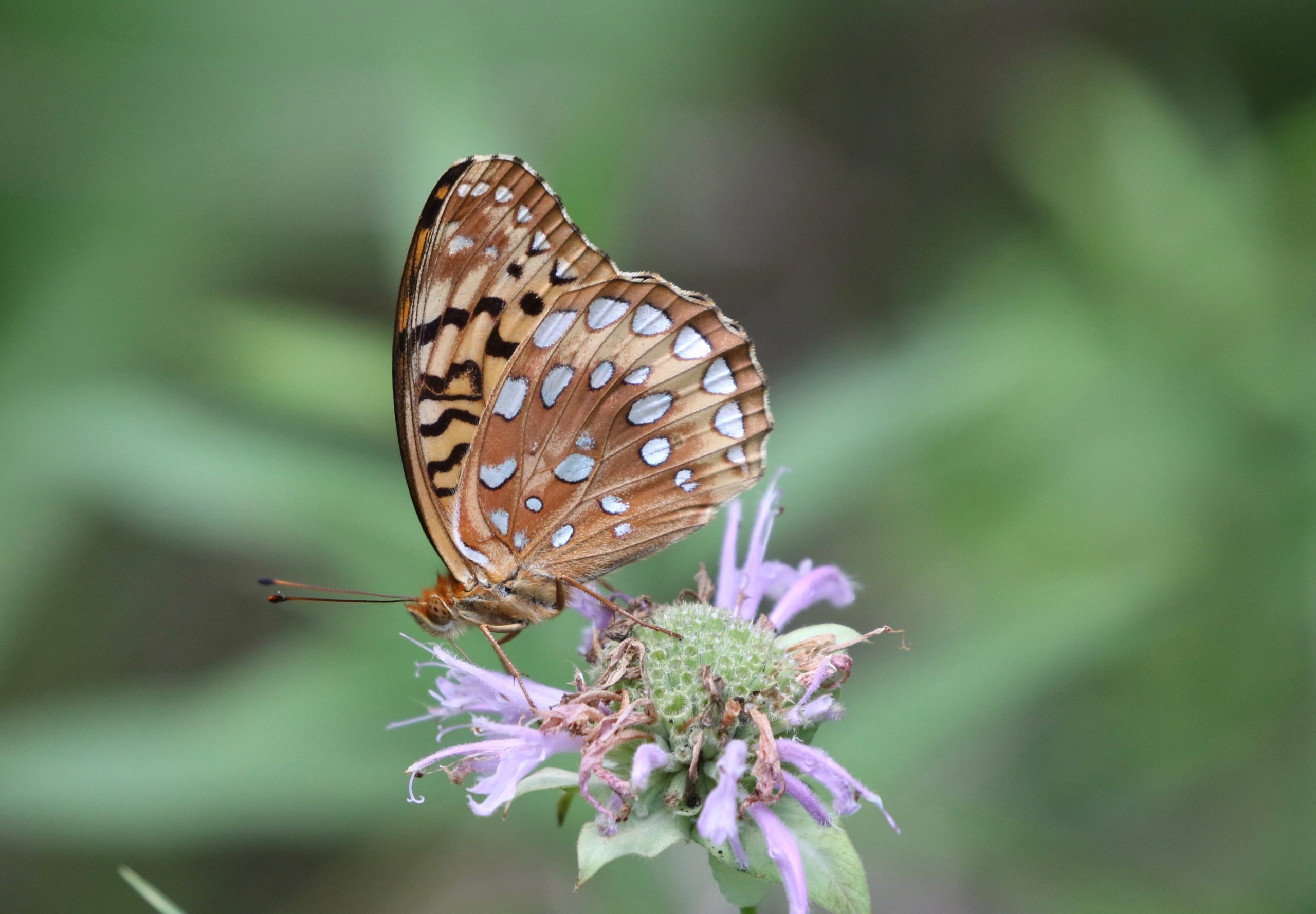
I went to the Butterfly Museum in Niagara Falls just recently and became interested in these creatures from there. Your article is the first education I’ve had in fritillaries. I’m realizing that there may be many varieties of a similar insect snd that I have to be patient and detail oriented to spot the differences. Thank you for a delightful article with wonderful pictures!
Thank you, Jeannette–I’m very glad you enjoyed the post. And that you’re getting interested in butterflies. If you and Vid are down again on the Leslie St. Spit, that’s a good place to observe them.